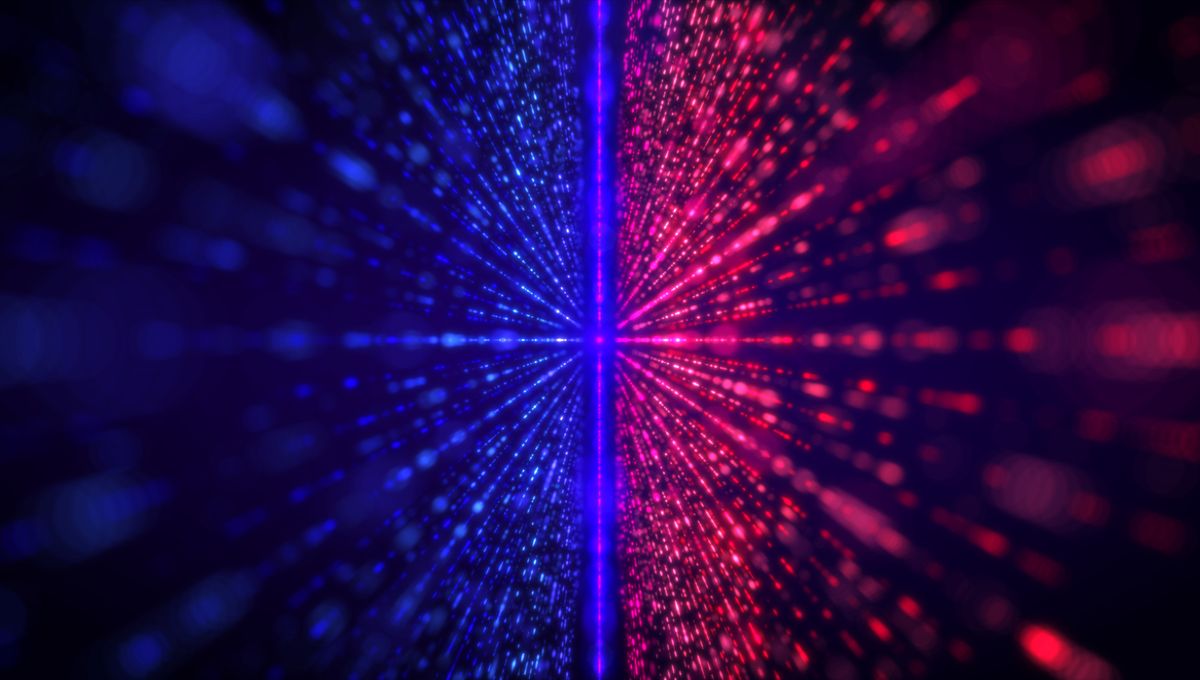
The Standard Model Of Particle Physics is one of the most revolutionary theories humans have ever created. From the behavior of fundamental particles to electromagnetism, the field that gives everything mass to nuclear decay, the Standard Model has got you covered. But we know that there’s a fair bit of reality beyond it, and scientists are hard at work trying to get there.
Coinciding with the UN’s International Year of Quantum Science and Technology, IFLScience traveled to CERN in Switzerland (home of the Large Hadron Collider) to talk with Professor Urs Wiedemann about this revolutionary theory and what lies beyond it.
What is the Standard Model of Particle Physics?
All theories discovered by mankind are theories with limitations.
Professor Urs Wiedemann
“The Standard Model is the model that encompasses all we know about the microscopic world on the level of single particles. So everything we know fits into the Standard Model. And the Standard Model can be written actually in a form that fits on a T-shirt,” Professor Wiedemann told IFLScience.
“It’s a very compressed way of formulating knowledge that starts with Maxwell and Einstein and goes up to the great theoretical discoveries and experimental verifications of the 20th and 21st century.”
The Standard Model explains electromagnetism and light, the strong nuclear force that holds the nucleus of atoms together, and the weak nuclear force responsible for radioactivity, respectively. It underpins most of the fundamental interactions and particles of reality. It has allowed us to predict things like the top quark and Higgs boson, long before they were discovered. But it doesn’t explain everything.
“All theories discovered by mankind are theories with limitations. The very fact that also the most encompassing, the most complete theory found today has limitations, is always the first step to learning about what comes next, what is an even better theory,” Professor Wiedemann explained.
“By thinking about the limitations and how one could test them experimentally, how one could see what is beyond experimentally, how one could see the little cracks in an almost complete theory. That’s a way to learn about a theory that lies beyond.”
Limitations of the Standard Model
Some of the limitations of the Standard Model are subtle, some are far removed from us, while others are so fundamental to us and how we see the world, that it’s almost puzzling that they are in the model.
For example, a limitation that was subtle and had to be corrected was the neutrino mass. This particle is so light that scientists were unsure if it even had mass. For the Standard Model, neutrinos were massless, but while we only know that they are below a certain mass (a recently halved limit), we know that they are not massless.
Another challenge to the Standard Model, this one cosmic, is dark matter and dark energy. These hypotheses are at the base of another standard model, the Standard Model of Cosmology. However, they do not fit in the Standard Model of Particle Physics.
There is profound physics that has yet to be understood.
Professor Urs Wiedemann
Closer to home is the fact that we are made of matter and not antimatter. According to the Standard Model, there are no differences between the two. They are mirrored images of each other, just that antimatter has the opposite charge. But clearly, there ought to be differences, otherwise, why is matter so much more common in the universe than antimatter?
The biggest limitation from our point of view is gravity. This is the crucial fundamental force in our everyday experience. But at a particle level, it doesn’t matter much. Gravity is immensely weaker than the other fundamental forces, and so the Standard Model gets away with ignoring it. But a true theory of everything, ought to have a quantum understanding of gravity.
Theories, experiments, and observations have been pushing and teasing at these limits of the Standard Model. Maybe an avenue of investigation might come from the magnetic moment of the muon, where data already indicate a discrepancy with the Standard Model (and an update will be announced this year). Maybe it will come from astronomy or gravitational waves.
“There is profound physics that has yet to be understood,” Professor Wiedemann told IFLScience.
Check out the full interview with Professor Urs Wiedermann in the video above where we go into details of the limitations of this revolutionary theory and what may lie beyond.
Source Link: “All Theories Have Limitations!”: What Lies Beyond The Standard Model Of Particle Physics?